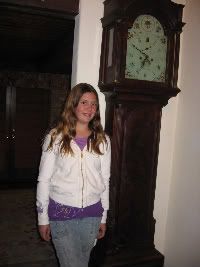Celebrating the U.S. Constitution
Here’s a piece I wrote originally in 2009 for another website, but I wanted to make it available to 2GreenEnergy readers as well.
220 years after the birth of our beloved U.S. Constitution we see its basic tenets challenged from many different directions. The complaints against the G.W. Bush administration that are most likely to endure through the coming generations are likely be rooted not so much in unpopular actions, but rather in actions that were deemed to have violated the supreme law of the land. Similarly, Republicans’ rancor with Obama’s financial bailout is based on the notion of his team’s having exceeded the powers specifically granted to the executive branch under the Constitution.
Last Friday I had the pleasure of hearing Sandra Day O’Connor speak at a luncheon. When she and I were introduced, I felt myself under pressure to keep my words brief. “A great honor to meet you,” I smiled as a shook her hand. But I sure would have liked to ask her: “Didn’t you find it frustrating to be forced to write an opinion of the narrow case you were hearing, rather than making a decision that would speak to the wider issue at stake and the way you felt it needed to be viewed vis-à-vis the Constitution? Didn’t you finding yourself constantly wanting to write, ‘This is what the nine of us think in this case. But here’s what we believe the Constitution means with respect to gun control, or abortion, or capital punishment–or whatever the larger issue happened to be?’”
She made a warm and resonant speech — one that everyone clearly appreciated — but she scrupulously avoided making comments on her personal views on philosophy and law. And she left immediately upon the completion of her talk, I presume specifically to avoid taking questions like these from people like me.
In any case, the one thing we can agree upon — almost unanimously, I think — is that the U.S. Constitution was written very carefully and thoughtfully, and that it’s a very good thing that we have something as solid and revered as this to serve as the touchstone of our conversations about law.
The Chippendale tallcase clock behind my daughter in the picture above was made circa 1790 — certainly within a few years of the construction and ratification of our Constitution. Before the clock stood in my dining room it was in my parents’ living room — and in my grandparents’ house before that. It’s not really a distinguished piece of furniture (sorry, Mom) — i.e., it’s not terrifically valuable as an antique. It was built in the fledgling U.S. by an unknown clockmaker; its movement had been imported from England, and it has no special design features that would make it particularly collectible.
But its modest monetary value does not begin to diminish my love of the piece. I look forward to winding it each Sunday evening; in fact, doing the math, I believe that I may have given it its 10,000th winding one such Sunday in the last few years. But one thing I know for certain is this: when I turn its crank each week, I feel a great sense of connectedness — to my loving parents, of course. But I also feel a mysterious connection to its previous owners — the earliest of whom lived and died in the very early days of our beloved republic. I’m proud to carry on a tradition that involves people whose names I’ll never know — people whose most basic relationship to me is the respect for a single document that was written by a group of gentlemen in Philadelphia, 220 years ago.


Very nice letter.